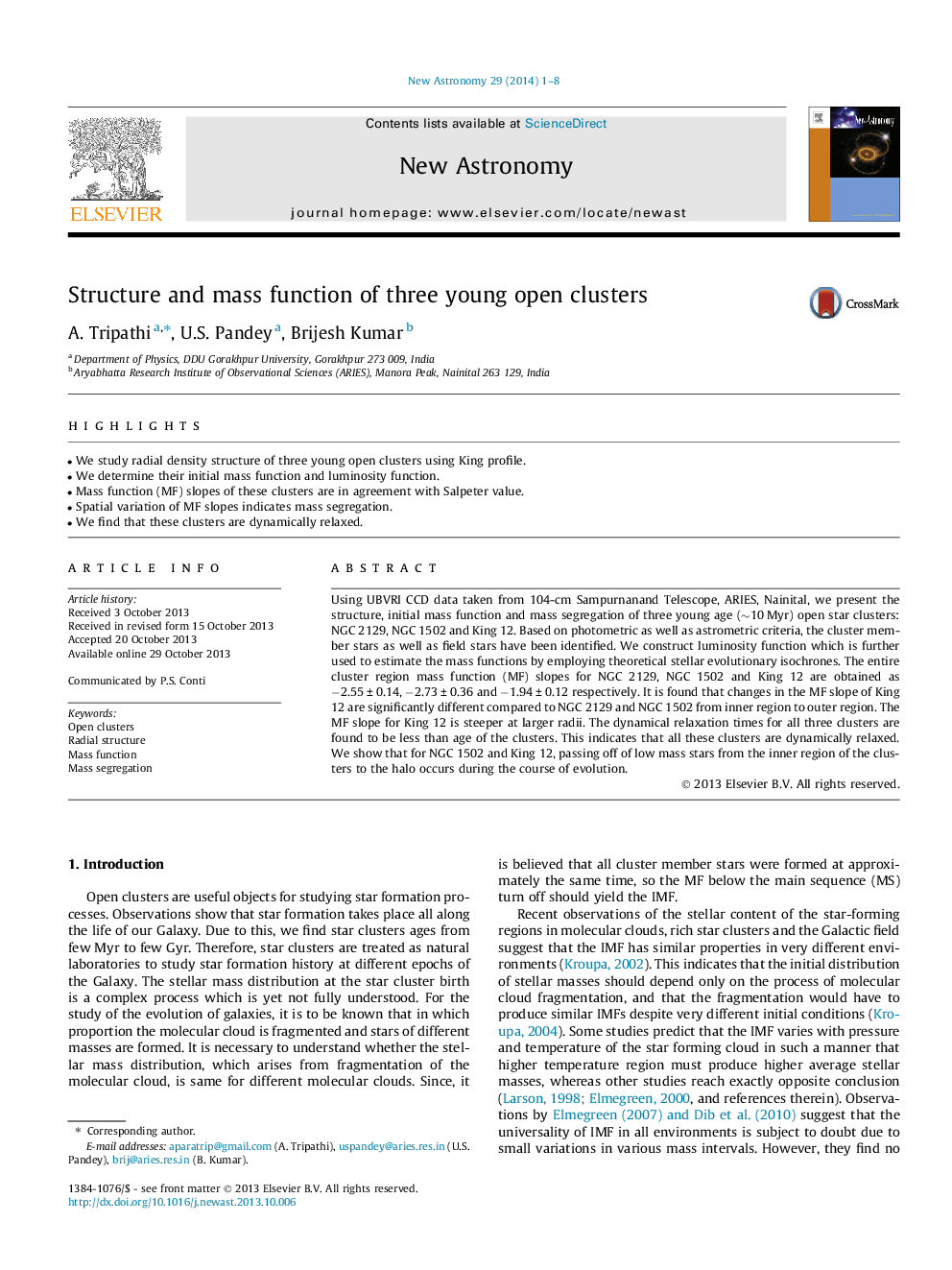| Article ID | Journal | Published Year | Pages | File Type |
|---|---|---|---|---|
| 1778991 | New Astronomy | 2014 | 8 Pages |
•We study radial density structure of three young open clusters using King profile.•We determine their initial mass function and luminosity function.•Mass function (MF) slopes of these clusters are in agreement with Salpeter value.•Spatial variation of MF slopes indicates mass segregation.•We find that these clusters are dynamically relaxed.
Using UBVRI CCD data taken from 104-cm Sampurnanand Telescope, ARIES, Nainital, we present the structure, initial mass function and mass segregation of three young age (∼10 Myr) open star clusters: NGC 2129, NGC 1502 and King 12. Based on photometric as well as astrometric criteria, the cluster member stars as well as field stars have been identified. We construct luminosity function which is further used to estimate the mass functions by employing theoretical stellar evolutionary isochrones. The entire cluster region mass function (MF) slopes for NGC 2129, NGC 1502 and King 12 are obtained as −2.55 ± 0.14, −2.73 ± 0.36 and −1.94 ± 0.12 respectively. It is found that changes in the MF slope of King 12 are significantly different compared to NGC 2129 and NGC 1502 from inner region to outer region. The MF slope for King 12 is steeper at larger radii. The dynamical relaxation times for all three clusters are found to be less than age of the clusters. This indicates that all these clusters are dynamically relaxed. We show that for NGC 1502 and King 12, passing off of low mass stars from the inner region of the clusters to the halo occurs during the course of evolution.
